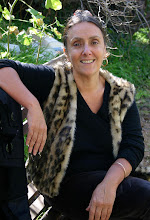THE PLACE WHERE STORIES LIVE
To sleep, perchance to dream . . .
Dreaming is the oldest form of storytelling. Have you ever wondered who's writing all those stories in the dream world?
It must be someone who has attended a few writing workshops: the characters find themselves in impossible situations filled with danger and desire, they struggle to achieve their goals, there are contradictions and stress points, and everything serves the story. Things may get very strange, but that’s been known to happen in novels, too.
Dreams are a perilous land, where anything can happen to anyone at any time, where we can experience the “satisfaction of primordial human desires”[i] or “the realisation, independent of the conceiving mind, of imagined wonder”[ii]. That’s Tolkien, writing about the land of Faerie.
Like Faerie, a dream exists in a landscape with an integrity of its own. A door opens into another reality, desire is evoked, emotions are stirred. The personal, everyday sense of self encounters something other than normal, waking reality, a perfect start for writing fiction. Dreams also come with a cast of thousands. As one of my notes from a writing workshop says: all the characters you will ever write are inside you now.
How can we access the creative genius of dreams in our waking life?
The following exercise is one I developed for working with dreams.[iii] It can lead you to the place where stories live. I have used it to find a starting point for a story, to shift writer’s block, to listen to the inner muse . . .
1) Begin with a dream motif--one element of the dream that catches your attention.
2) Draw a small circle in the middle of a large piece of paper and write a word that describes the element of the dream in the circle.
3) Allow any associations that you have to that word--anything that comes to you (no censoring). Write each association at the end of a line you draw out from the central circle like spokes.
4) When you have finished--or have at least 8 associative words--write one, long sentence using all the associative words. Connect the words using linking verbs (be, am, is, are, was, were, being, been, be, has been, are being, might have been, etc.) and transitional words to form the sentence.
5) On a new piece of paper, represent each word of the sentence as a picture. The pictures can be very simple--stick figures or line drawings. They do not need to represent the words for anyone else--just you. Draw the pictures in the same sequence as the words.
6) Cover all the previous work except the pictures.
7) Get up, stretch, make a hot drink, do something else for a few minutes.
8) Return to the pictures and write down the story you see there. Forget the previous work. Let the pictures tell you a story and you write it down.
9) Keep writing . . .
______________________________________________________
______________________________________________________
[i] JRR Tolkien (1965), “On Fairy-Stories.” In Tree and Leaf, pp. 3-73. Houghton-Mifflin Company, Trade & Reference Division. p.13.
[ii] Ibid., p.14
[iii] The original idea from which I developed this dream work exercise came from: J Houston (1998), The Passion of Isis and Osiris: A Union of Two Souls. Random House.

No comments:
Post a Comment
Comments and discussion always welcome . . .